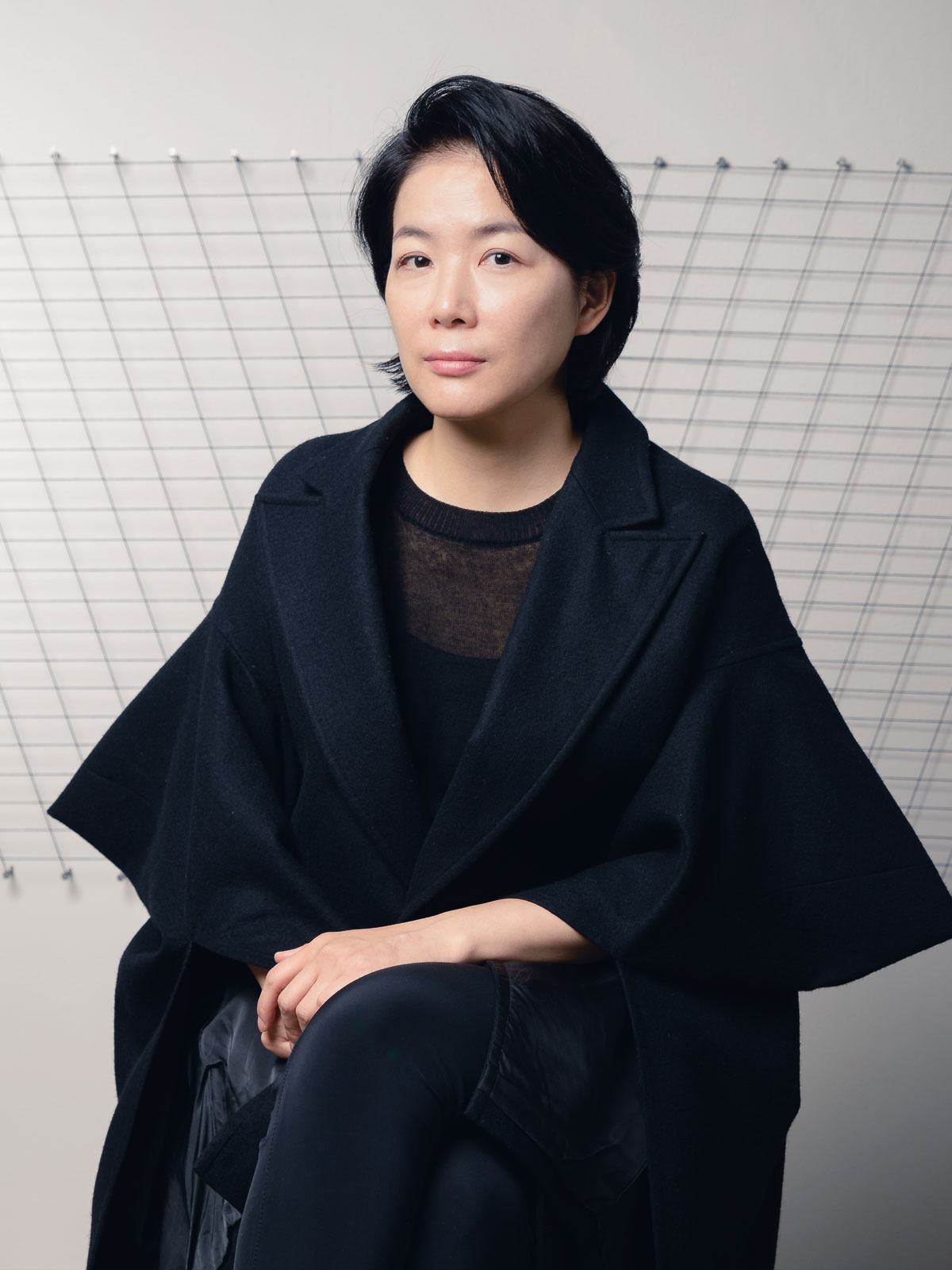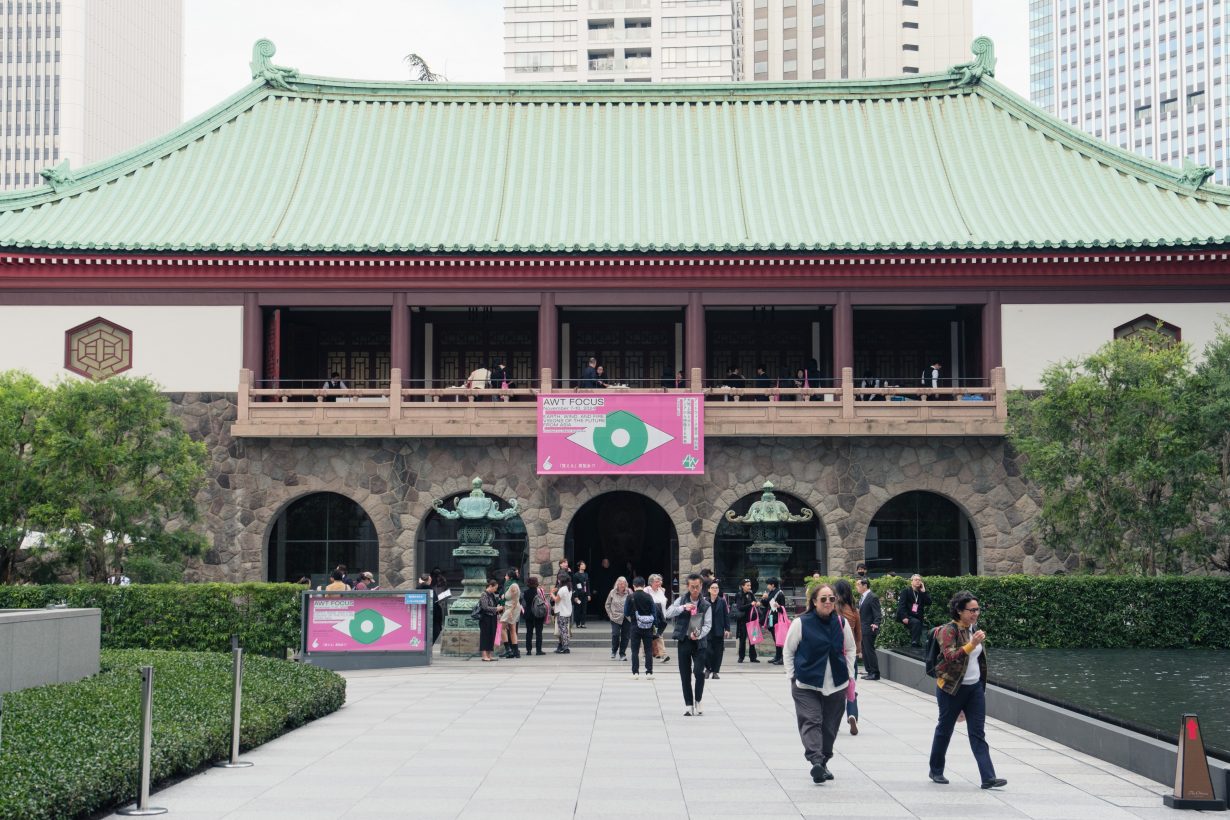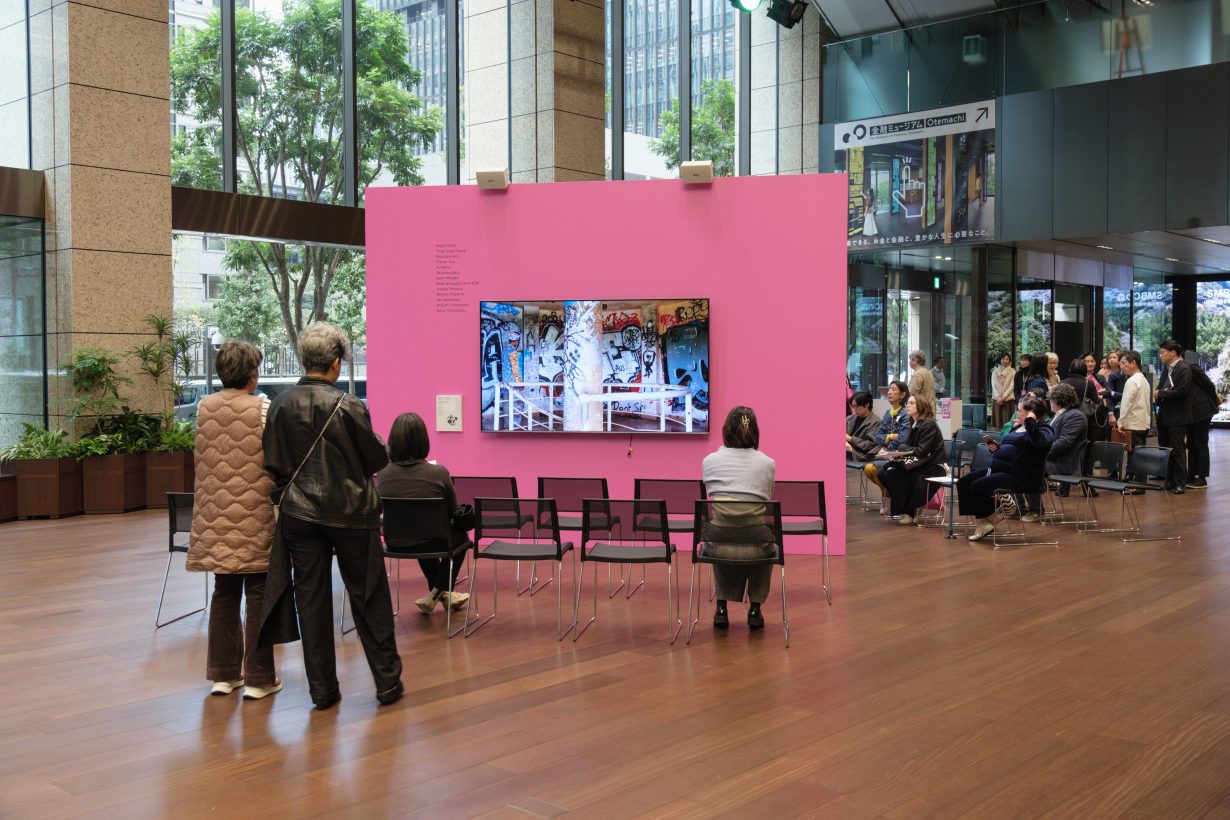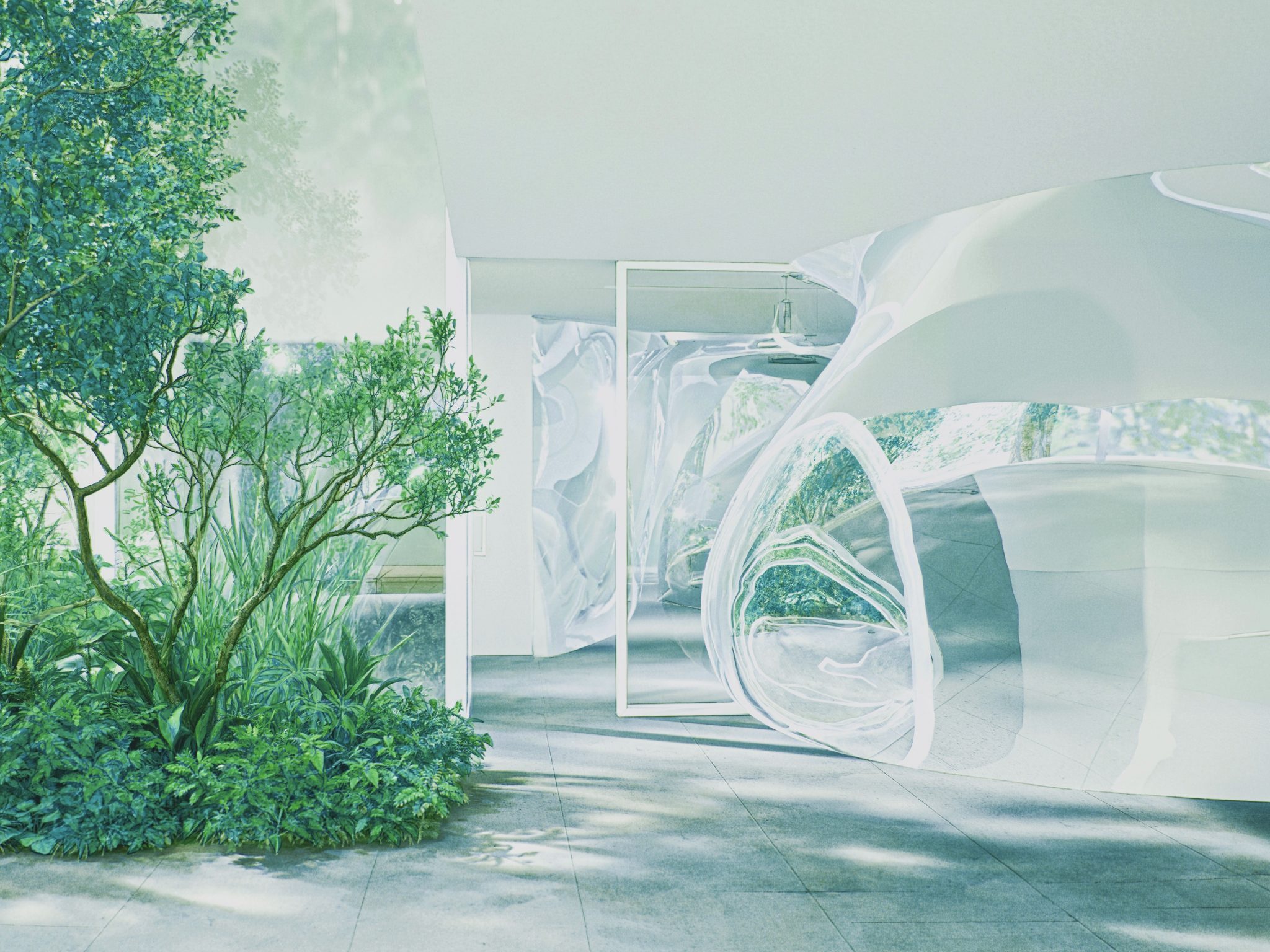ArtReview sat down with Art Week Tokyo director Atsuko Ninagawa to discuss the project’s origins, ambitions and plans for the future
Art Week Tokyo, organised by Japan Contemporary Art Platform in collaboration with Art Basel, is an annual citywide showcasing of art by organisations throughout the capital. Now in its fourth year, AWT 2025 features more than 50 participating galleries and institutions, and is accompanied by a series of platforms encouraging engagement and interaction across the city’s bustling art scenes. These include AWT Focus, an exhibition of 60 artists curated by Adam Szymczyk, AWT Video, the AWT Talks programme and AWT Bar, all served by AWT Bus, a free service operating along seven routes to connect venues around the city. Ahead of the opening of this year’s edition, ArtReview sat down with Atsuko Ninagawa, cofounder and director of Art Week Tokyo (and owner and director of participating gallery Take Ninagawa), to discuss AWT’s origins, ambitions and plans for the future.
ArtReview How did you first become interested in art and what was your journey into working with it?
Atsuko Ninegawa My parents are activists and I’ve always been interested in social change, but I was looking for a different approach from direct politics and gravitated to art. I studied art history and theory at university and also took a course on nonprofit art management with Kazuko Koike, a pioneering figure in Japan’s alternative art scene who ran Sagacho Exhibit Space in Tokyo for many years. I was seriously thinking of working in the institutional sector but ultimately decided to open a gallery, because I felt I could do more to support emerging and experimental practices by creating my own independent art programme. Art Week Tokyo ties all those strands back together, as it is a major nonprofit initiative that involves working across institutional, gallery and alternative spheres.
AR What inspired you to develop Art Week Tokyo? And has the event changed anything about the Tokyo art scene over the past two years? Have there been any outcomes that have surprised you?
AN Art Week Tokyo emerged out of the COVID-19 pandemic, when the local and the international art scenes were becoming atomised and it was clear that a concerted effort had to be made not just to reconnect them but also to facilitate the work of translation to ensure that meaningful dialogue could take place. That’s why it was important to make an event that could activate the art ecosystem as a whole, rather than only a single sector with a single value system. And that’s also why the free AWT Bus service, which physically brings people to the places where art is happening around the city, is also key to Art Week Tokyo’s identity as a new form of decentred and dynamic art event that engages broad communities.
I don’t know if it’s a surprise as such, but running Art Week Tokyo has reconfirmed for me the richness and depth of art in Japan, both in terms of the sheer diversity of artists and the quality of the art spaces. It feels like every year reveals a completely different facet of the scene here, and there’s still a lot more to come.

AR AWT navigates the balance between public and private art initiatives in Tokyo. How would you describe that balance within the city’s art ecosystem (in London, for example, private foundations with galleries are a relatively new thing; in Colombo they are the only thing…)?
AN I think the mix of public and private art initiatives here is what makes Art Week Tokyo work so well. We have multiple levels of institutions, from national museums to municipal museums and private museums, which are balanced by a vibrant, homegrown gallery scene that supports a broad range of practices. We also have a strong tradition of corporately funded art spaces that goes back to Shiseido Gallery, which was founded in 1919 and continues to support work by emerging and midcareer artists, along the lines of a kunsthalle in Europe. Traditionally, each of these sectors has operated relatively independently from the rest – it’s almost unheard of to find a single gallery influencing museum programming, or for museum acquisitions to suddenly trigger a boom in gallery sales – and we’ve tried to respect that idiosyncrasy while also showing how the sectors complement each other through Art Week Tokyo’s programming.
AR Adam Szymczyk will be the first international curator to helm the AWT Focus exhibition. Why did you invite him and what can we expect from the exhibition?
AN Adam first participated in Art Week Tokyo in 2022 as the inaugural curator of AWT Video, which featured 17 artists under the theme Working, Crawling, and he has attended every edition since. My team and I developed a genuine dialogue with him over the years, and he has expressed a genuine curiosity about art in Japan in all its different manifestations, so it made sense to invite him to be the first international curator of AWT Focus. We expected him to set up striking yet thoughtful juxtapositions of Japanese and international artists, and he has delivered by asking the simple yet provocative question ‘What is real?’ Featuring more than 100 works by 60 international artists, his exhibition addresses the sense of irreality that pervades life in the age of social media, Zoom meetings and AI, while also casting a fresh light on various historical techniques of representation, from realism in drawing and painting to documentary photography and video, as well as abstraction and minimalist spatial interventions. Adam has also worked with the architect Hiroyuki Kimura to transform the space of the historic Okura Museum of Art, which is housed in a building that was completed in 1927, through the exhibition design. I’m excited to see what they have come up with.

AR Is there such a thing as ‘Japanese contemporary art’ beyond the accident of where it is made? And if so, what defines it?
AN I would say yes and no. There are certainly some shared concerns or sensibilities that we can recognise among Japanese artists, which are in part determined as much by the language barrier as other cultural or environmental factors. But it’s also important to keep in mind that modern and contemporary art in Japan have always been transnational, and that any attempt to define them according to a cultural essence risks effacing a long and complex history of cultural translation and experimentation. It’s more interesting to explore the in-betweenness of Japanese contemporary art, which is an approach taken by the curators of one of the headlining exhibitions for this year’s edition of Art Week Tokyo, Prism of the Real: Making Art in Japan 1989–2010 at the National Art Center, Tokyo. Their exhibition includes international artists like Joan Jonas and David Hammons alongside Japanese figureheads like Takashi Murakami and Yoshitomo Nara, as well as underappreciated groups like the Kyoto-based multimedia performance collective Dumb Type, which explored how identity, sexuality and consumerism intersected with technology during the late 1980s and early 1990s.
AR How do you select the galleries that are part of AWT?
AN Art Week Tokyo focuses on local galleries and art spaces that have shown a sustained commitment to supporting and building artists’ careers. International galleries are welcome to participate in AWT Focus and AWT Video at the invitation of their respective curators, and we plan to expand the possibilities for international galleries to participate through new initiatives next year.
AR How would you describe the differences between AWT and an art fair?
AN Art Week Tokyo is not an art fair. It is a nonprofit, hybrid platform that unites all the main sectors of the art scene across the city. It offers the convening power and convenience of an art fair, but it’s driven by an ethos of sharing resources and opportunities among the community as a whole. Since all galleries participate for free and use their own spaces, they participate on their own terms. And helping to build the museum sector discourse is as important for us as promoting the galleries.
It’s also important that Art Week Tokyo extends beyond a single, centralised venue. Visitors are going out into the city to see art in galleries and other spaces, and along the way they also explore different neighborhoods and other elements of Tokyo’s cultural and social fabric, which gives them a sense of how art is grounded in local conditions. Each visitor’s experience of Art Week Tokyo is different from the next, and repeat visitors –including locals – get to discover the city anew each time. Then we organise talks and other events where people can reconverge and exchange ideas. I think this format works really well for Tokyo, where the urban landscape is geared towards exploration.
AR Who is the audience for AWT? Are you aiming at a general public or a special-interest group?
AN Art Week Tokyo is about building bridges between different groups – between the general public and professionals, between local collectors and international collectors, between local professionals and international professionals, between institutions and galleries, between government and private sectors, and between one generation and the next, including children. It seeks to break through the physical and mental isolation that people can easily feel from so-called ‘networked society’ by bringing them together for in-depth conversations and encounters.

AR Related to that – what role do you think contemporary art actually plays in Japanese society (in the UK for example, we might say that it is a minority sport, still embedded within issues of class and status)?
AN There is a broad curiosity and respect for contemporary art in Japan, which is evident in the scores of museums around the country and the proliferation of biennale-style art festivals in many localities over the past two decades or so. At the same time, there’s a tendency for art to be viewed through an instrumental lens, which can flatten the experience for audiences and sets up a situation where arts funding is contingent on delivering economic impact. Art Week Tokyo is structured around facilitating a deeper engagement of art for all participants, which encompasses everything from the person who steps into a museum or gallery for the first time to someone buying their first artwork, learning about a new artist or gaining a new insight into art.
That’s why the core of Art Week Tokyo is the AWT Bus service. Anyone can ride the bus for free from any stop just by showing up and asking for a wristband, and it makes it easier for people to commit time to viewing art if they know they don’t have to worry about transit. Likewise, our AWT Talks programming addresses multiple audiences, from art professionals to youths and people who are simply curious about what’s going on in art discourse. The AWT Bar, where visitors can drink artist-invented cocktails in an environment designed by an emerging architect, is also an extension of the talks programming, in the sense that it’s a space for informal conversations about art.
The goal is to sustain the continued growth of Tokyo’s art scene by fostering a broad audience that is passionate about contemporary art, which in the long-term will secure more funding and support for the arts through both policy and market mechanisms.
AR How would you describe the Art Week Tokyo Mobile Project?
AN Art Week Tokyo is organised around a content-based initiative on the one hand and an infrastructural initiative on the other. The content-based initiative is simply known as Art Week Tokyo. The Art Week Tokyo Mobile Project is our name for the infrastructural initiative, the main focus of which is the AWT Bus. Buses run every 15 minutes across seven routes on the weekend of November 7–9, and we’ve also added express lines this year connecting AWT Focus to institutional hubs. It’s a major logistical undertaking.
AR The AWT Bar has provided an opportunity to work with architects, what are you looking for with this commission?
AN The AWT Bar is a popup multisensory art space that comprises several commissions. We invite an emerging architect to design the bar space, we invite one of the city’s rising chefs to produce edible creations for the menu and we invite contemporary artists to invent new cocktails that reflect their practices. There’s also a sound programmer who commissions sound installations and performances for the space.
Starting this year, the architect Kazuyo Sejima, who is a cofounder of SANAA and also runs her own eponymous office, joined the project as architectural adviser. She took the lead in selecting the architect, Ichio Matsuzawa, who has designed a space that continuously transforms in response to the shifting conditions of the environment.
This year’s chef, Shinobu Namae of Bricolage bread & co. and the three-Michelin-starred restaurant L’Effervesence, is making savory and sweet items that comment on the intersections between ecology and economy – a seaweed jambon beurre sandwich and a financier cake topped with gold leaf – which are priced at 500 yen each, less than a drink at Starbucks in New York or London. And among the cocktail artists, the renegade art collective Chim↑Pom from Smappa!Group have come up with a hot cocktail inspired by the image of space debris.
The ultimate brief for the AWT Bar is to create convivial space where the city’s different cultural fields can come together and interact.
Art Week Tokyo takes place 5–9 November at galleries and museums across the capital
